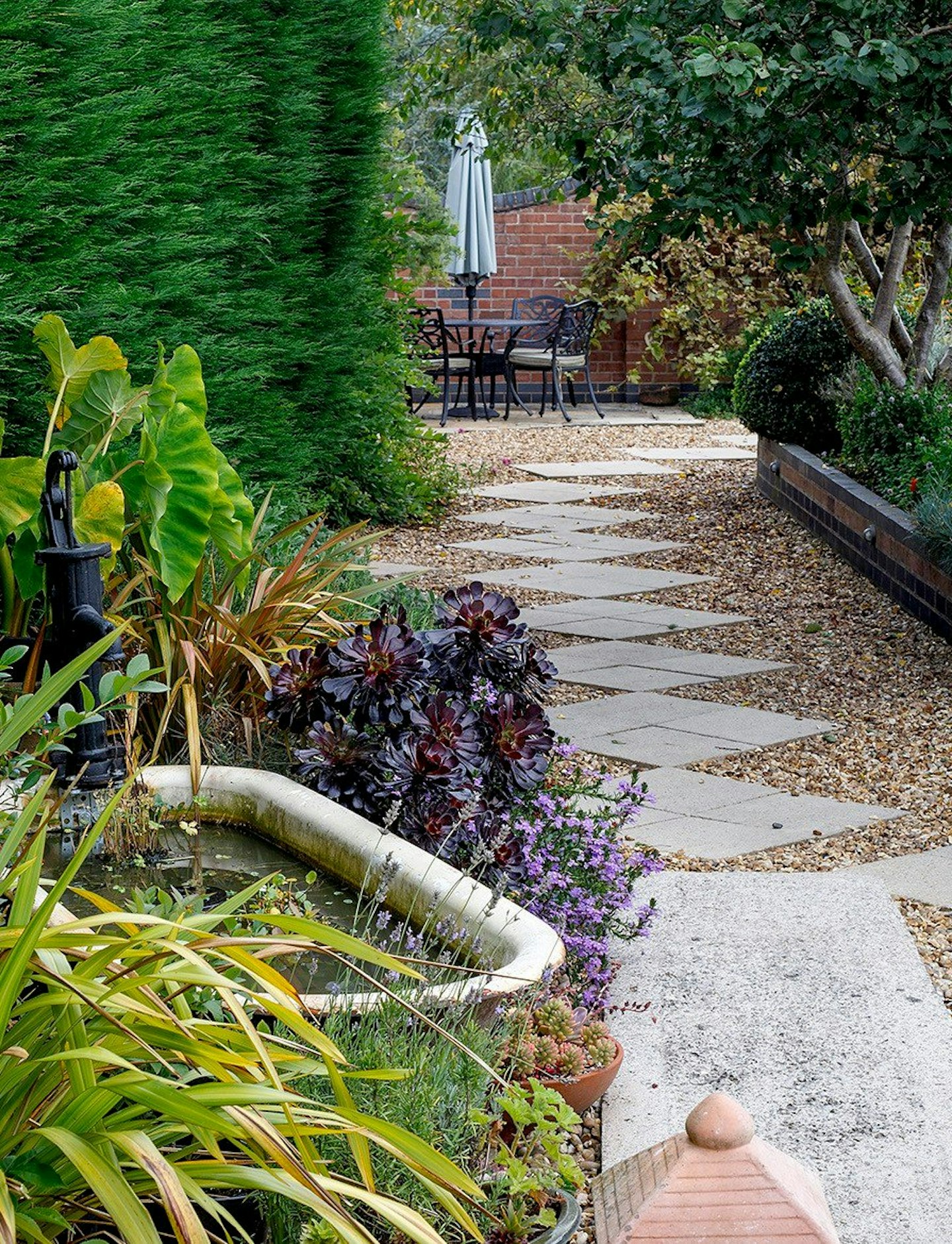GARDEN TOUR
This Cheshire garden is based on organic, wildlife-friendly principles and proves that such a space can still look lovingly tended and beautiful
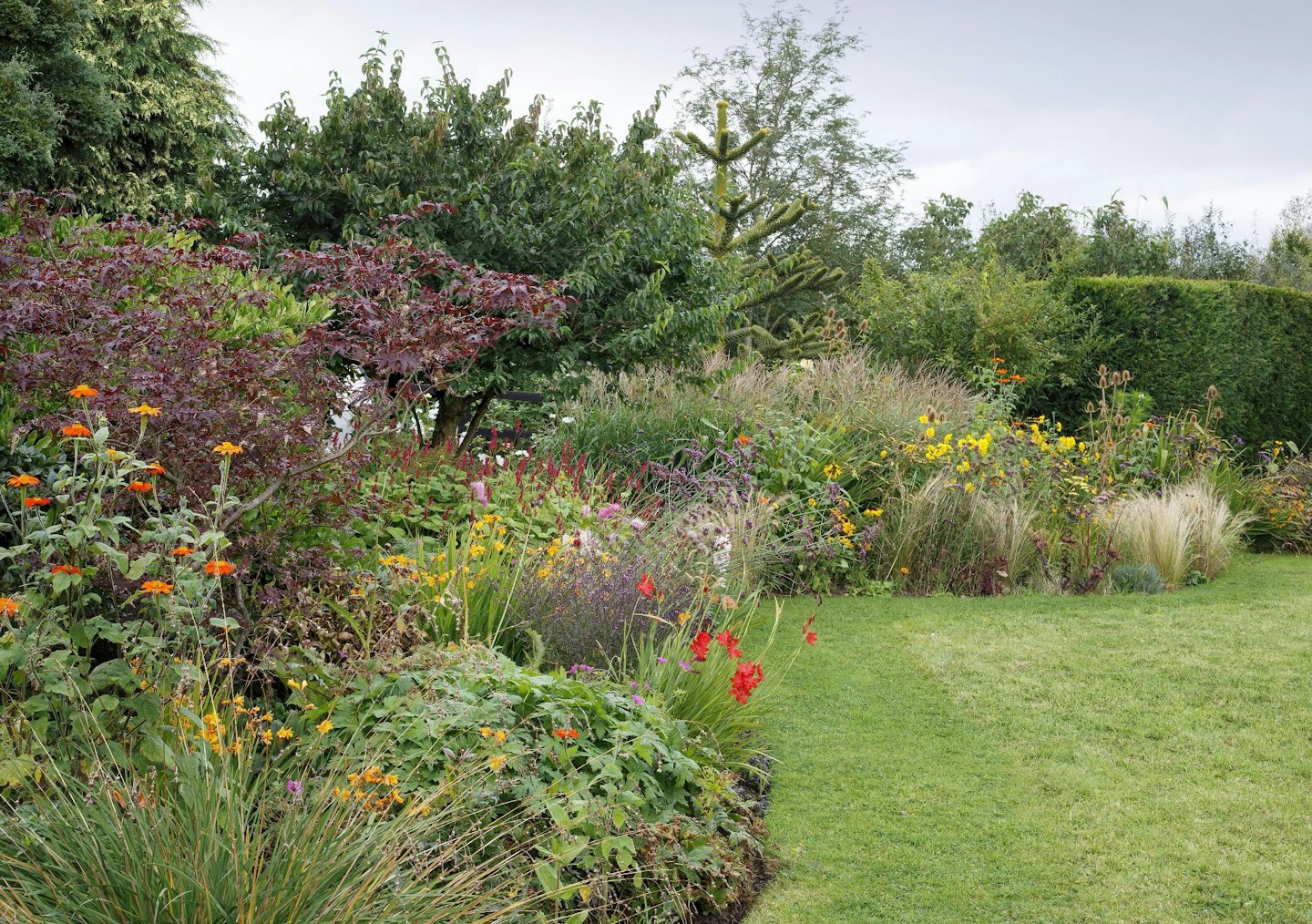
Milford House Farm is proof that you can have a beautiful outdoor space and garden organically. The lawn wraps around the house as you make your way through the garden. It’s cut a few times a year, around the edges only to make paths, and no feeds, mosskillers or weedkillers are used on it. The centre of the lawn is left to its own devices and contains lots of different common wildflowers. There’s also a lot of moss growing unabated. “It keeps the lawn nice and soft, and stays greener than the grass in dry weather,” Heather says. “A recent visitor commented how soft it felt, and I wasn’t sure whether to tell them that was because of the moss!”

One of Heather’s favourite features of the garden, and a delight for any plant lover as they wander, is the white and green island bed. Plants include a common jasmine that climbs a large frame, carnations, Stachys byzantina (lamb’s ear), white and green variegated hostas, Lamium maculatum ‘Beacon Silver’ (“although the purple flowers spoil the overall effect!”), lots of ferns, white foxgloves grown from seed, white-flowered honesty, white-flowered borage, white buddleja and pretty Exochorda macrantha ‘The Bride’, with its dainty white spring blossom. Other beds and borders in the garden are also coordinated with combinations of hot colours – oranges, reds and yellows – grown together, as well as combos of pinks, purples and blues. “I have to be strict with myself, but sometimes, for instance, some plants of the white-flowered borage in the island bed will come up blue, and I just haven’t got the heart to dig them up!”
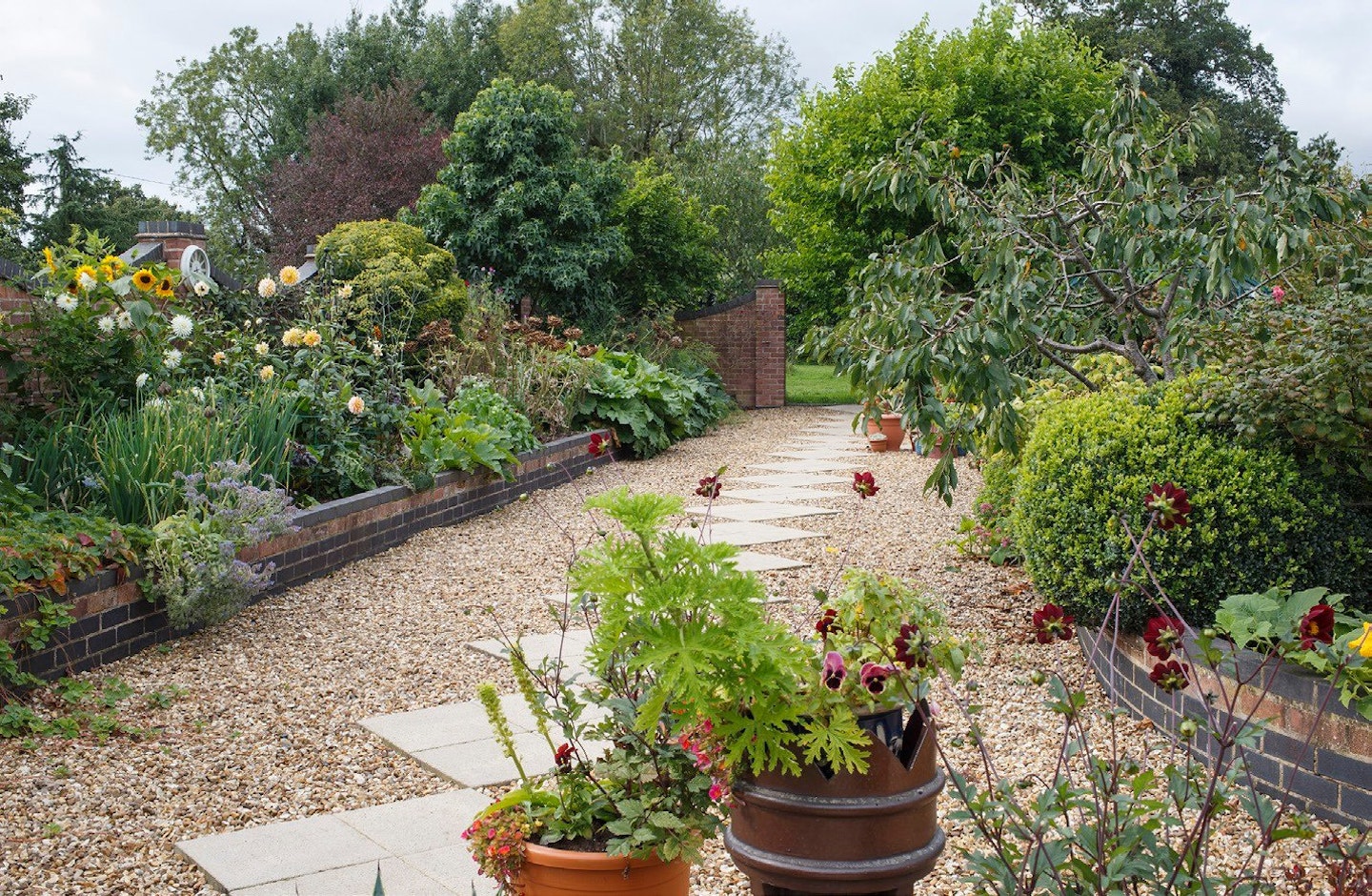

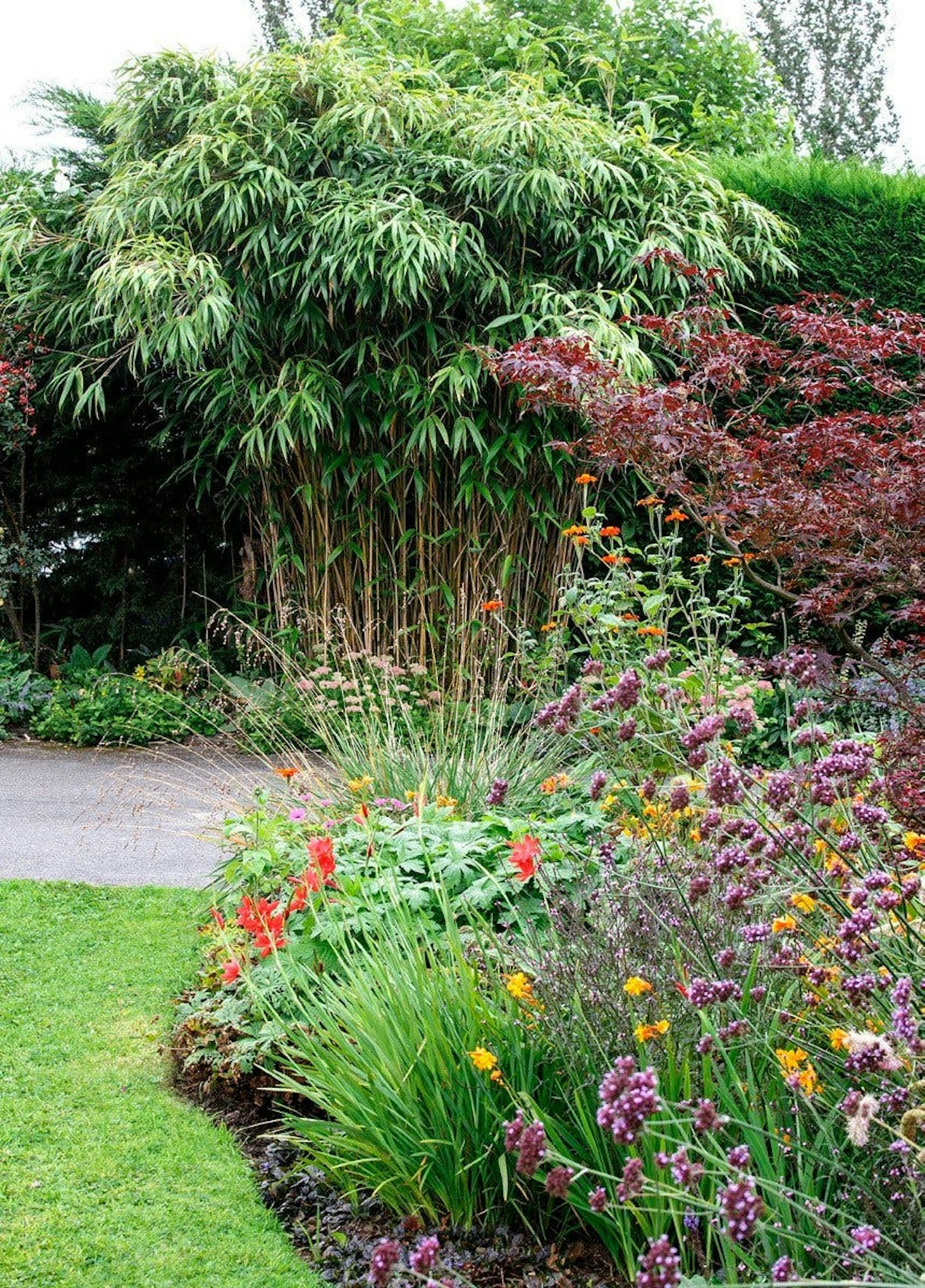
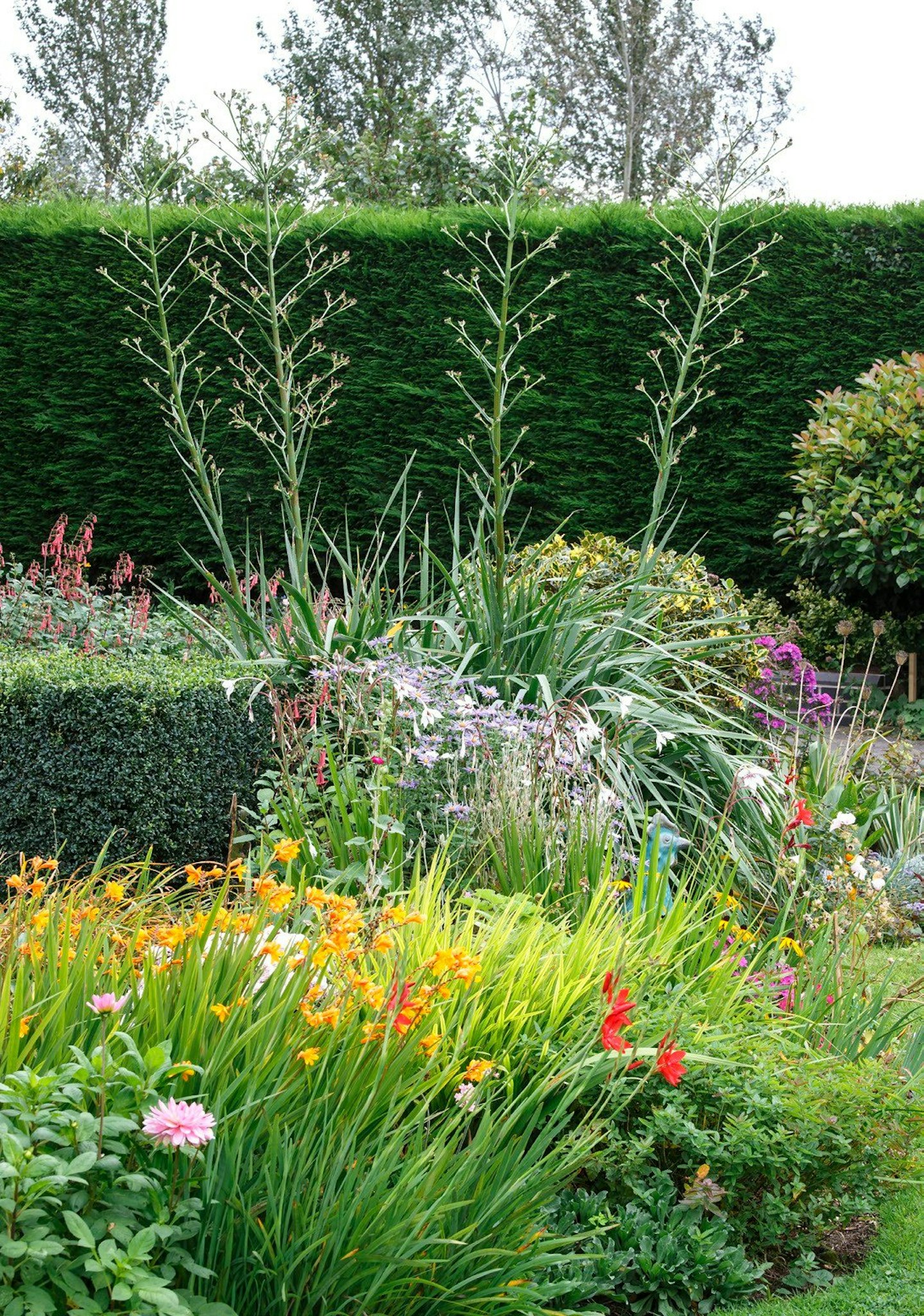
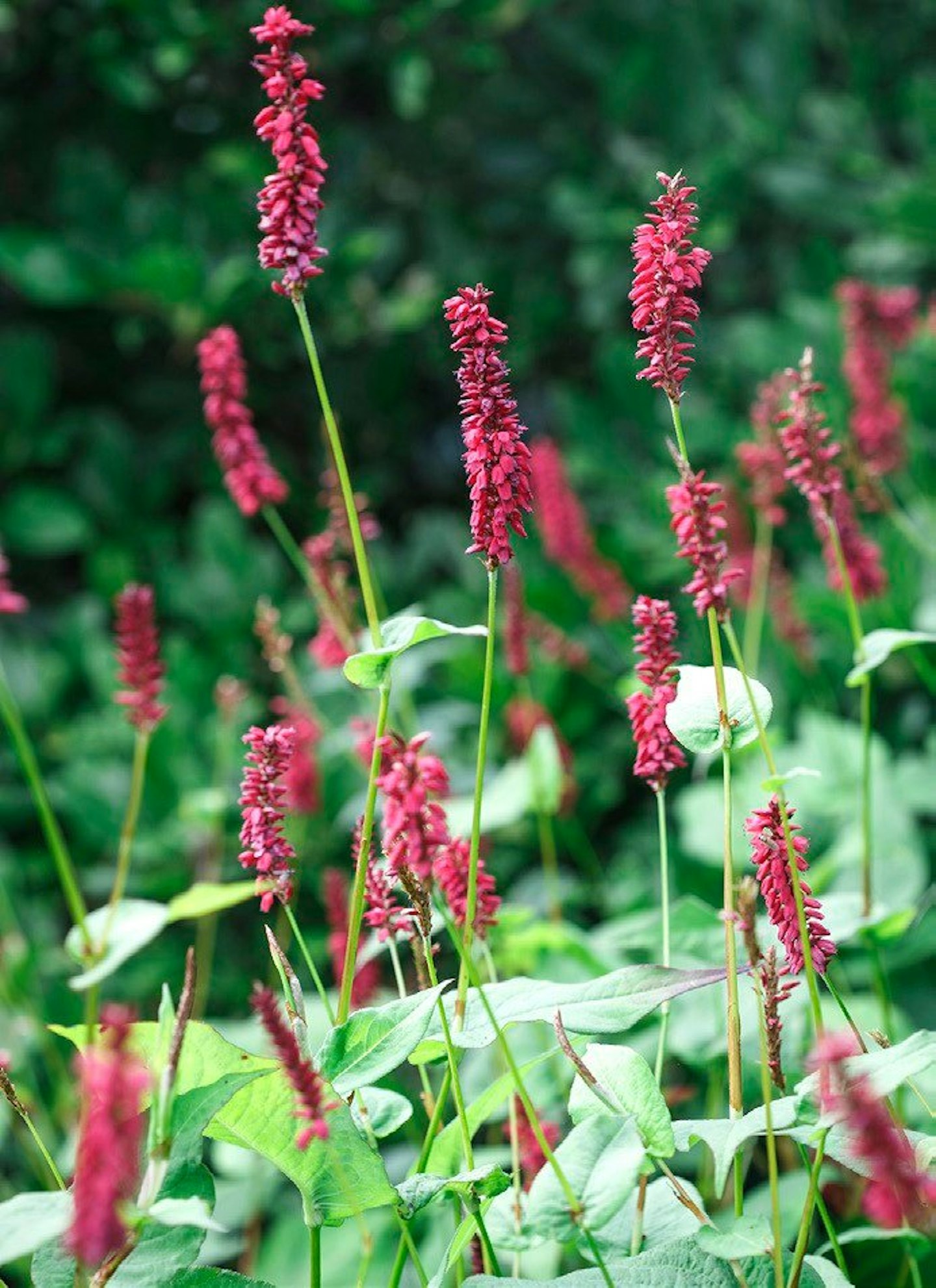
Another of Heather’s rules is to ensure as little soil as possible is visible. “I do use some ground cover plants, such as stachys and hardy geraniums, but I like to fill areas with full growth, using large clumps of perennials. I prefer to see the area covered and plants blend into each other. Any gaps that appear are filled with annuals, grown from seed, all of which help to keep the weeds down.” Heather also cleverly fills gaps by growing gladioli, lilies and scented-leaved pelargoniums in pots and dropping them into gaps when they come into flower, sometimes pot-and-all.
The hedges that provide a solid backdrop for the bustling borders are cut in August and September and in winter, so as not to disturb nesting birds, and the garden has a massive bird population, which Heather feeds daily. There are bird boxes and log piles made from the trimmings and prunings from the large number of trees in the garden, plus the hedge clippings. “We don’t have bonfires because this releases pollutants into the atmosphere.”
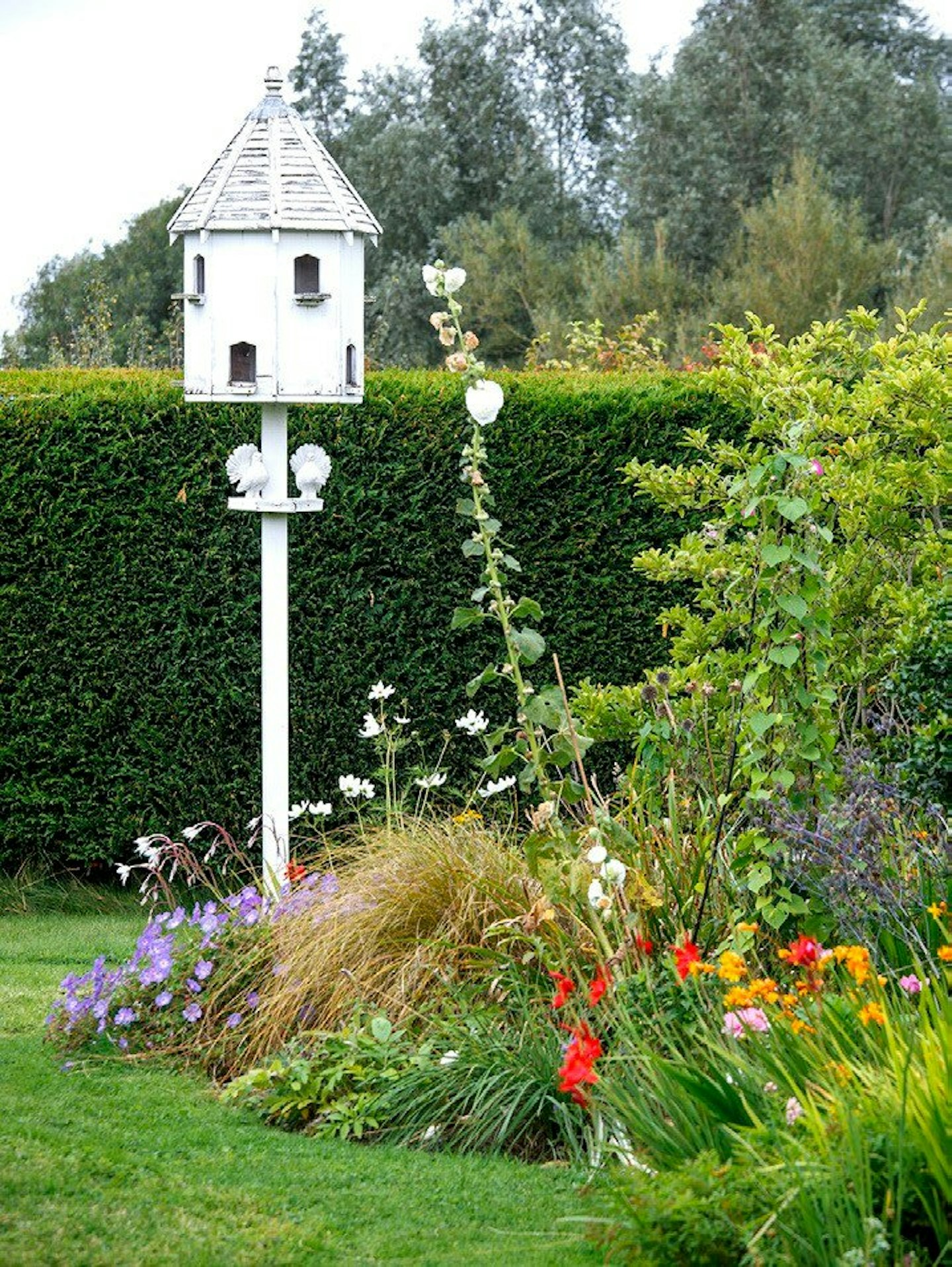



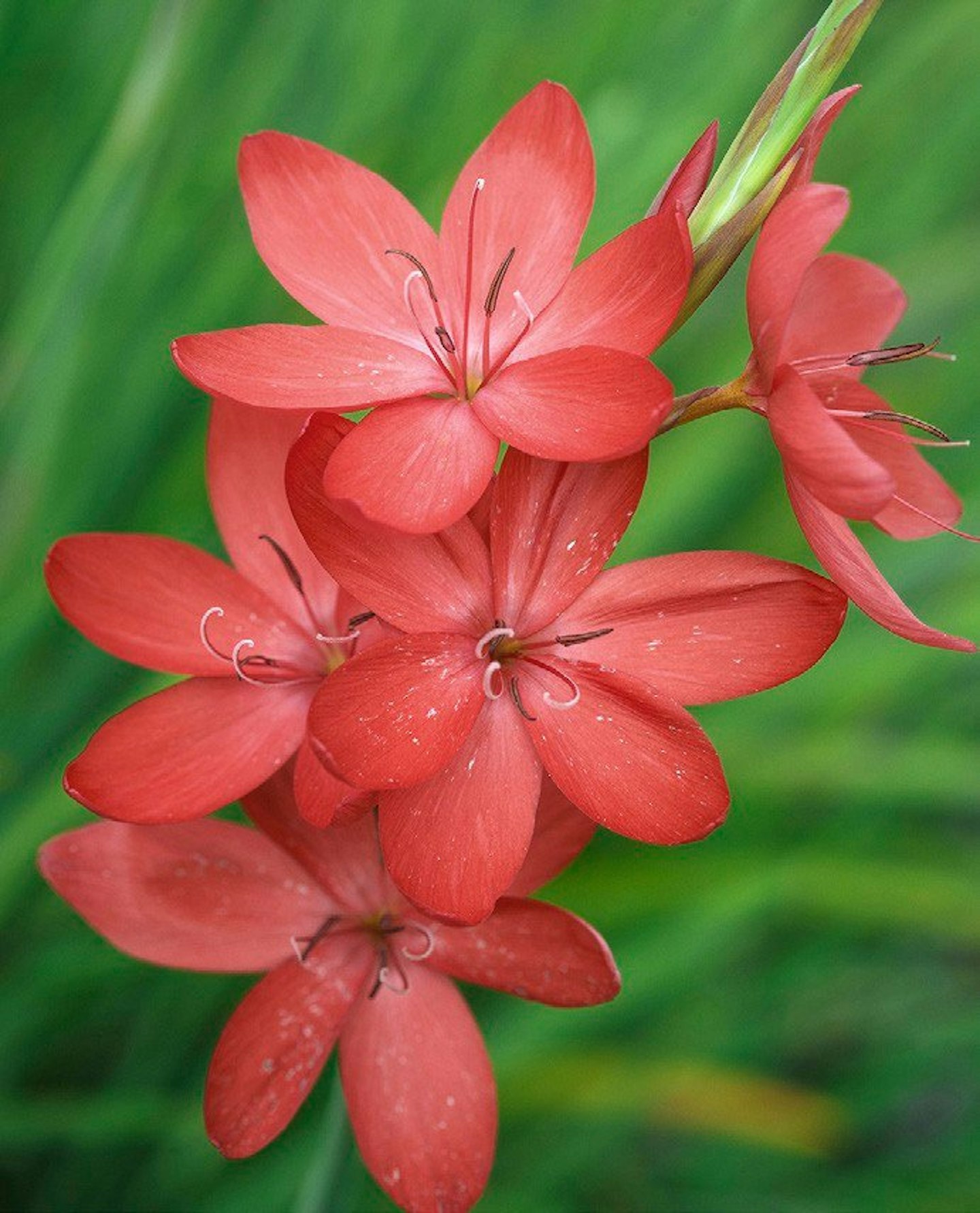
The orchard contains an open mix of fruiting, ornamental and native trees, including willows and silver poplars. Heather has supplemented the old ‘Bramley’s Seedling’ apples that were there when they moved in with quince, medlars, mulberries and ‘Williams’ Bon Chrétien’ pears. It also has a large wildlife pond, created by simply digging into the natural clay. This is home to lots of newts and toads. Heather doesn’t use garden chemicals, pesticides or weedkillers, and feeds plants with a seaweed fertiliser. “Most of the plant nutrition comes from the annual applications of copious mulches and from the fact that the soil isn’t dug over,” she explains.
One of the main features at Milford House Farm is the 16x10m walled garden where Heather grows lots of fruit and veg. She grows tomatoes and cucumbers in the greenhouse and a wide range of vegetables, including salad leaves, early potatoes, onions and different squashes and pumpkins. “I tried growing something new every year. This year I tried chickpeas for the first time. I’m not overwhelmed by the crop, but they have nice foliage and I’ll grow more next year.” The vegetables are planted in patches, fitting among surrounding plants including the wall shrubs, perennials and dahlias, wherever there’s space. Heather grows the squashes and pumpkins around the edges of the beds, allowing them to spill onto the paths. “I encourage them onto the gravel as this keeps them clean, gives them plenty of light and helps them ripen.”
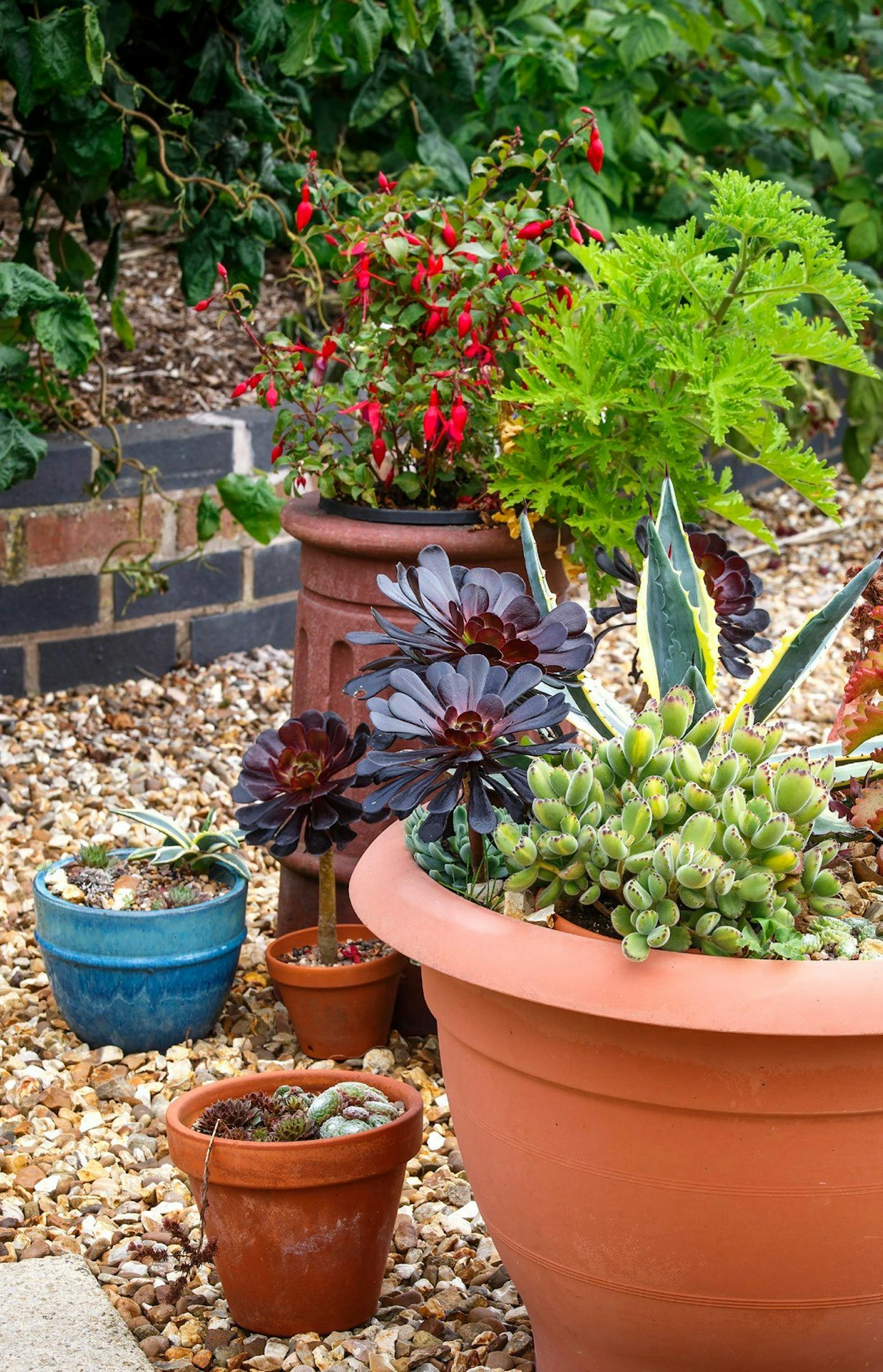
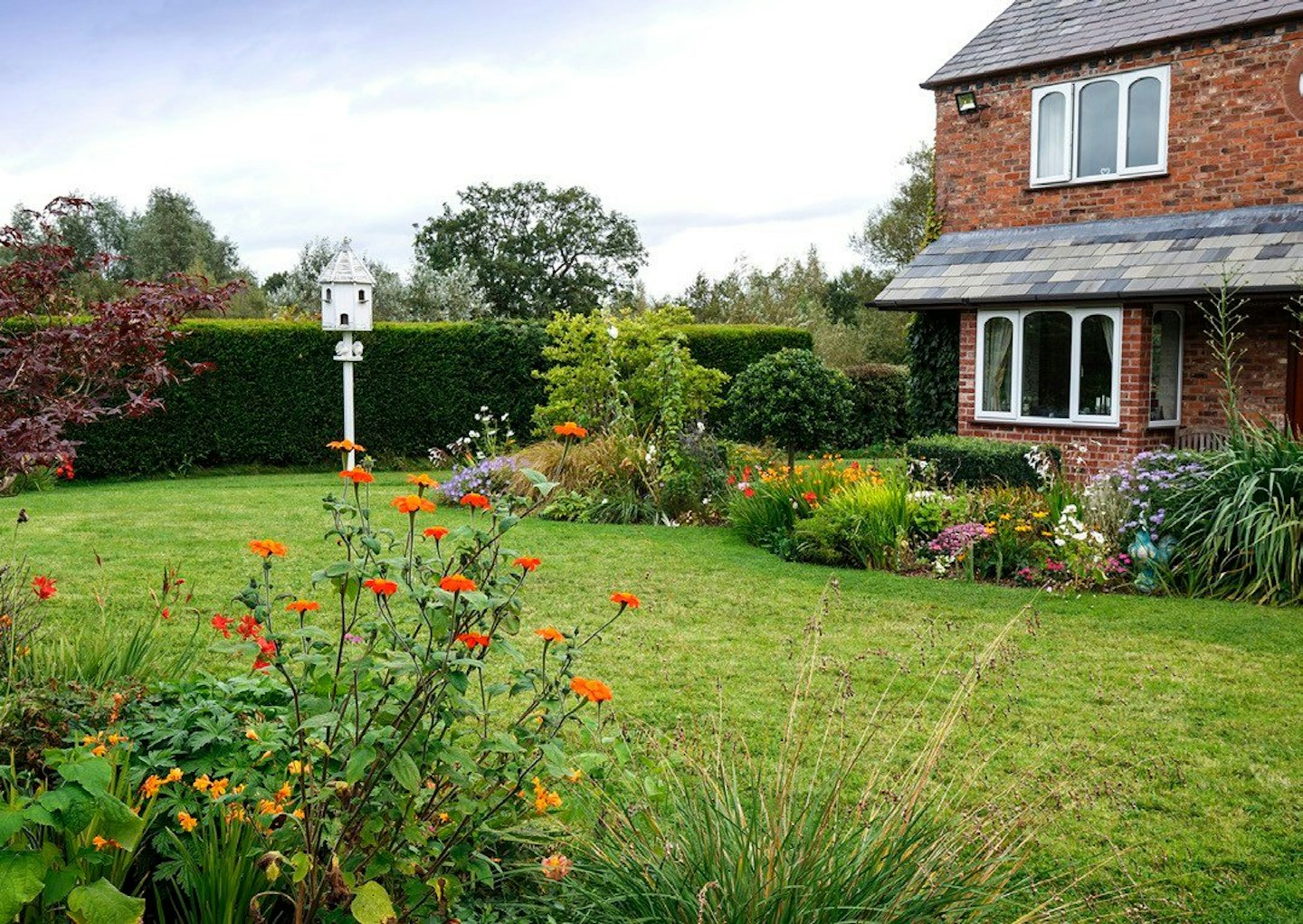
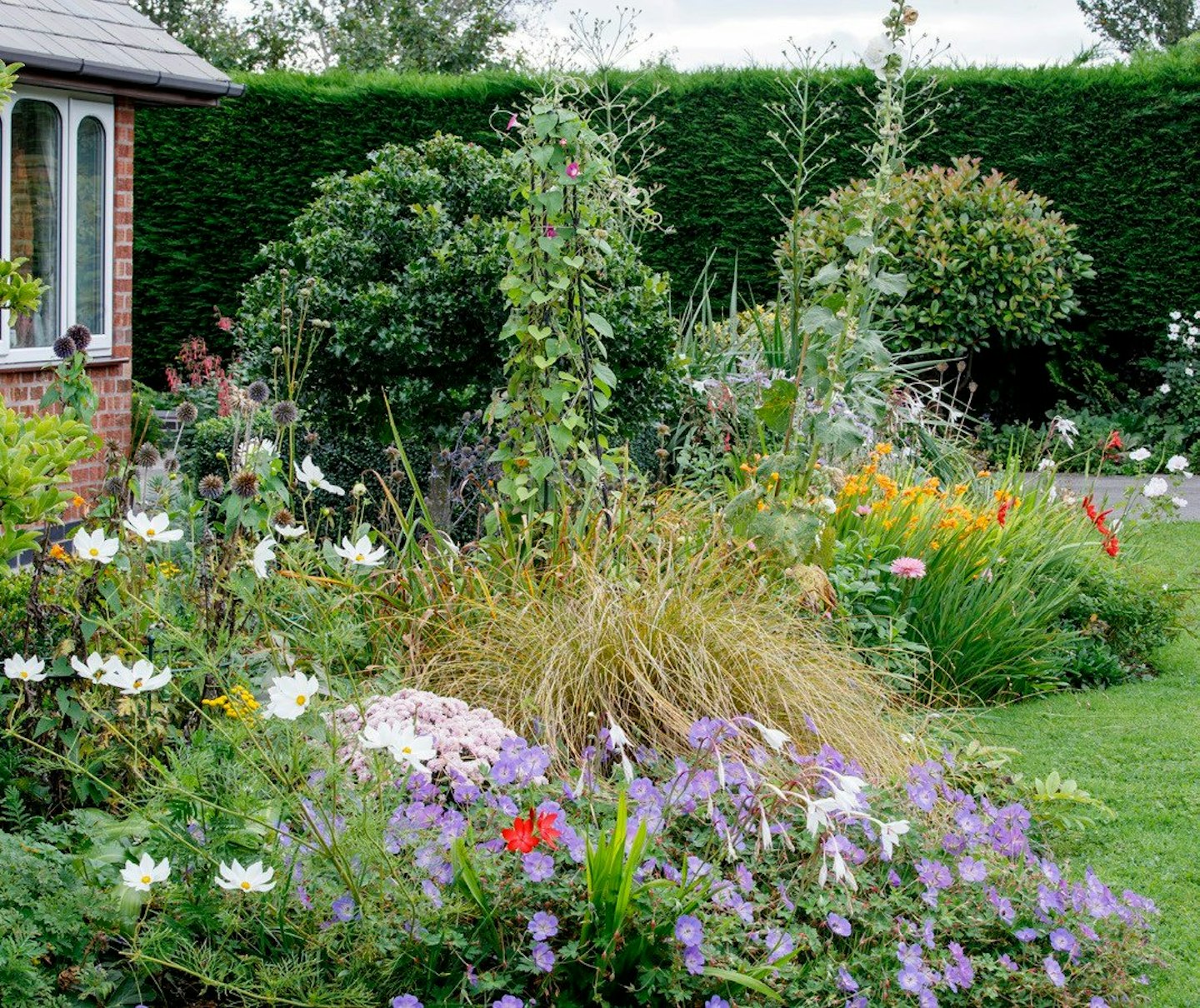
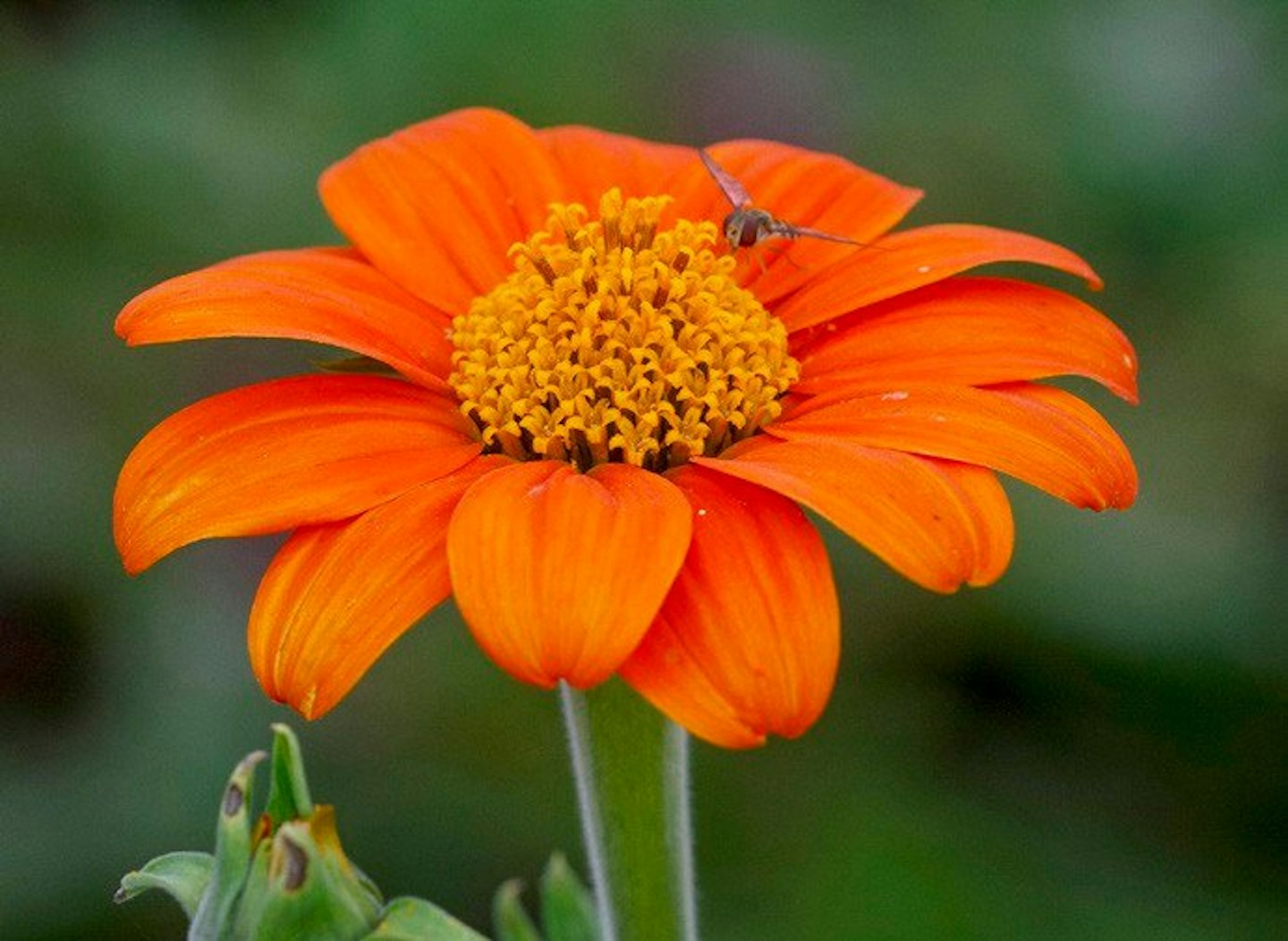
While Heather is the main gardener, doing all the usual tasks of growing, planting, planning and deadheading, her husband Chris helps with jobs that need two pairs of hands and cuts the grass. For Heather, the garden is her main hobby. “Although it’s been called an ‘obsession’, and it gives me endless work, worry and extreme pleasure and happiness in equal measures. I can pop outside for 10 minutes to do something and then come back indoors two hours later!” She started gardening from the age of four or five and received rigorous training from her father, who is a great gardener, and insisted everything had to be done properly.
“When I was younger, we visited gardens when on holiday. I saw lots of walled gardens and always wanted one. Maybe I had delusions of grandeur!” says Heather. Her father was a builder and his contact built the walls, although the swags and pillars were left to her father to complete. “Due to the costs involved, we created it over a three-year period. The low walls around the beds make them easier to work on. The paths are made from paving slabs laid in a diamond design for aesthetics and gravel to reduce the cost of paving the whole area. When you walk in there on a sunny day, you’d think there was a lid on it as it’s significantly warmer than the rest of the garden.”
